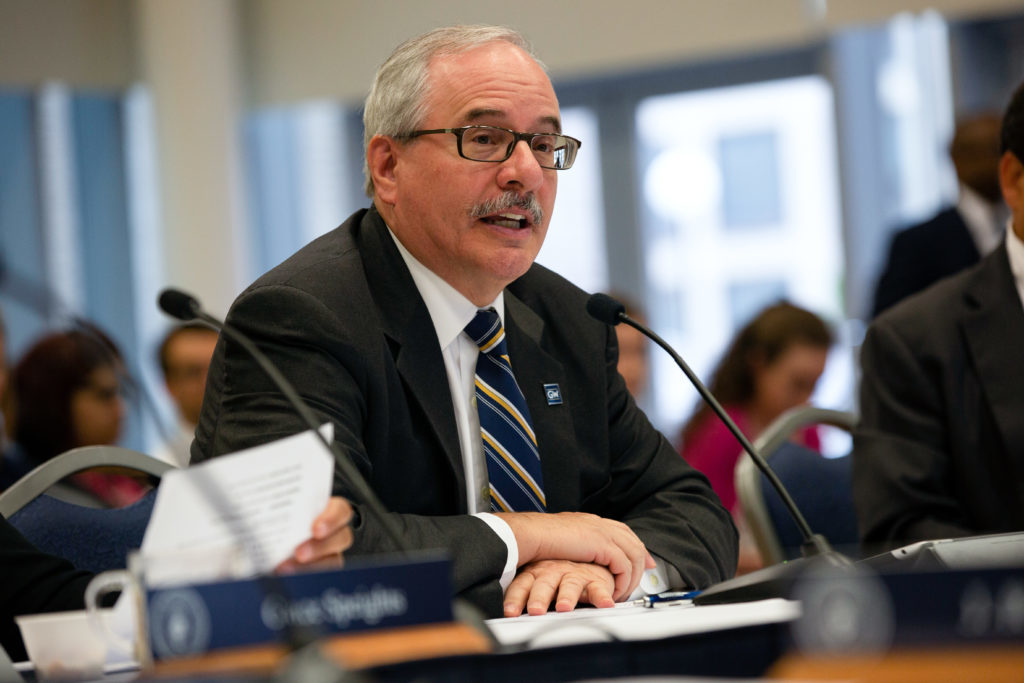Top administrators are focusing on growing the University’s cash reserves in case of enrollment emergencies and other crises.
University President Thomas LeBlanc said in an interview last week that the University is prioritizing building up its roughly $400 million in reserves to account for unexpected financial missteps. Officials and experts said increasing reserves could make GW more attractive to credit agencies and improve the University’s overall financial stability.
LeBlanc said that because the University is growing every year – and currently operates on a more than $1 billion budget – officials need to continually invest in the reserves. He said the reserves are comparable to a savings account – which officials can use in the case of a financial emergency, like a natural disaster or unexpected drop in enrollment.
He said currently, the University’s reserves fluctuate between $200 million and $400 million, which is “not where they need to be for us to weather the various storms one could see out there.” He said the University is currently operating on a five-year financial plan, which prioritizes building up cash reserves.
“Right now, we have a ways enough to go, that rather than worry about, ‘are we too far yet?’, let’s worry about, ‘how are we going to start to build up our reserves?’” LeBlanc said.
Provost Forrest Maltzman said at a Faculty Senate meeting earlier this month that building up the stockpile of emergency funds from money unspent in individual schools will help build stability for the University.
“Just like you’d like to not have your bank account at zero, you’d like to have some funding in there for unexpected expenses for if the brakes go out in your car or whatever it may be,” he said.
Officials decided to enact budget cuts across the University for five years in 2015 after graduate and professional schools missed projections for enrollment, creating unexpected loss in revenue.
GW outpaced its peer schools in cash on hand in 2012 when GW held roughly $600 million in its reserves. The University’s reserves reached more than $200 million at the end of fiscal year 2007, which allowed GW to survive the financial recession of 2008.
“What is absolutely critical is that you can’t have huge shocks overnight in any sort of budget model because people need time to adjust and build things into their plan,” Maltzman said.
Officials announced in the fall that last fiscal year was the first since 2012 that the University’s revenue has operated on a surplus of $100 million instead of just breaking even.
The University of Rochester, one of GW’s peer schools, holds $2.3 billion in its reserves, according to financial documents. Northeastern University kept about $300 million on hand in fiscal year 2017, according to financial documents.
Finance experts said building up reserves demonstrates to creditors that the University is financially stable, possibly increasing GW’s credit rating – which would make debt cheaper for borrowing and refinancing in the future.
Chris Gardner, the associate vice president for finance and controller at Wofford College, said credit agencies look at the ratio of the amount of cash reserves a university has, compared to statistics like its other assets, investments and debt.
“You’re improving that ratio, the stronger the credit profile,” he said.
The University issued a nearly $800 million bond in March to refinance debt and to invest in construction projects, like upgrades to Thurston Hall.
Andy Carlson, the vice president of finance policy and member services at State Higher Education Executive Officers, said that while reserves help protect the University from economic volatility, building up cash reserves should be weighed against the immediate needs of students currently attending the school, whose tuition is being used to create reserves and who may not see the benefits in four years.
GW has struggled with its reliance on tuition dollars, with roughly 60 percent of the budget coming from students’ tuition. Officials have tried to increase philanthropy in recent years to grow its endowment, the University’s financial foundation, but alumni giving still hangs around 9 percent.
“Those cash funds are being filled up with tuition,” Carlson said. “If students who are currently there are paying for that, they should reap the benefits.”





